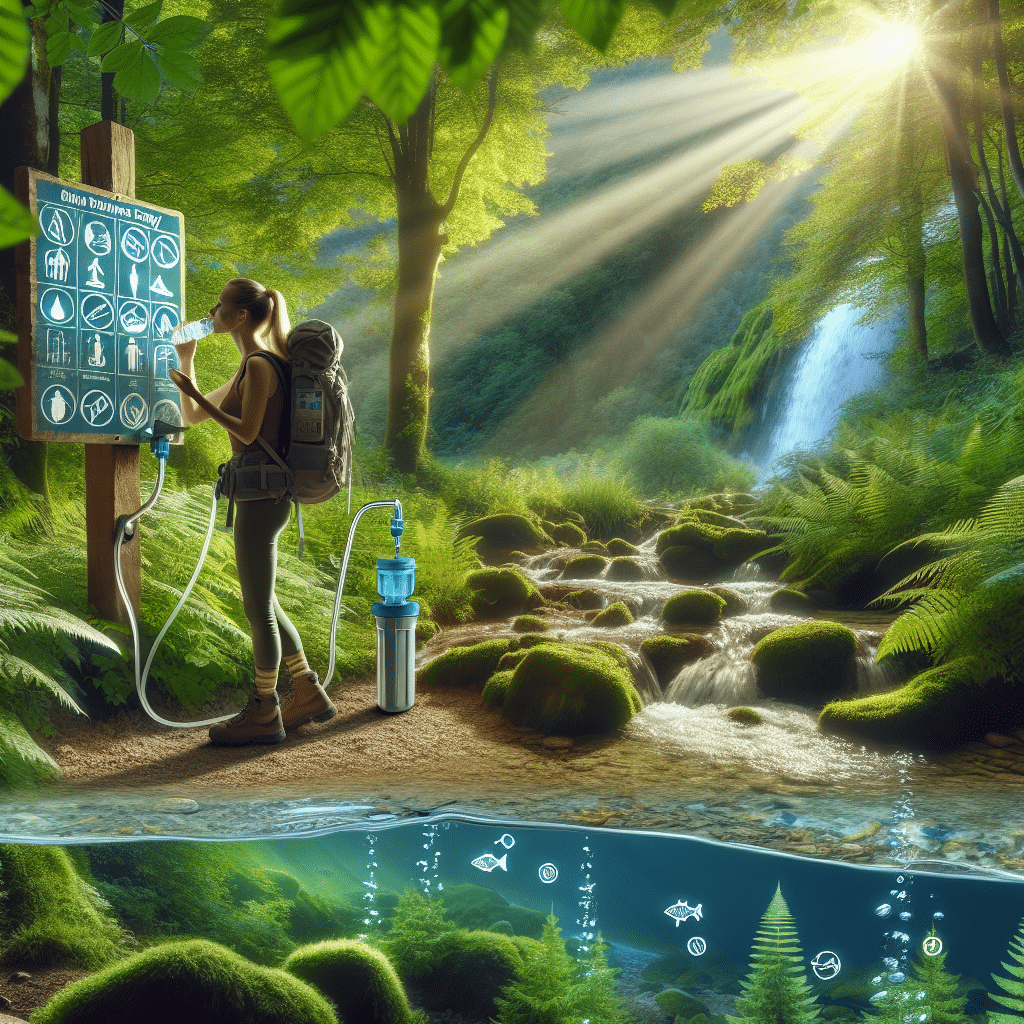Safety Tips for Drinking Natural Water Sources
While nature offers an abundant supply of fresh water in lakes, rivers, and springs, it is crucial to ensure that this water is safe to drink. Natural water sources can harbor contaminants and pathogens that may pose serious health risks. To help you safely enjoy the purity of natural water, consider the following safety tips.
Understand Natural Water Sources
-
Types of Natural Water: Familiarize yourself with the different types of natural water sources, which include rivers, streams, lakes, and springs. Each has unique characteristics regarding water quality and potential contaminants.
-
Location Matters: Assess the surroundings. Water near industrial areas, agricultural fields, or urban locations can be more contaminated due to runoff and waste.
Assessing Water Quality
-
Visual Inspection: Before you consider drinking, visually inspect the water. Avoid murky, discolored, or foamy water. Clear water is not always safe, but it’s a better starting point.
-
Check for Signs of Contamination: Look for signs like dead fish, unusual algal blooms, or garbage in and around the water source. These can indicate pollution or biological contamination.
Knowledge of Local Wildlife
-
Wildlife Presence: Animals around a water source can influence its safety. Avoid drinking from areas frequented by livestock, as animal waste can introduce harmful bacteria and pathogens.
-
Fishing and Swimming Areas: If the water source is popular for fishing or swimming, it may be subject to higher contaminant levels. Always research local regulations regarding these activities and safety advisories.
Water Testing
-
Use Test Kits: Purchase a water testing kit before venturing out. These kits can measure pH levels, bacteria, nitrates, and other contaminants, providing essential data on water safety.
-
Local Resources: Check with local health departments or environmental agencies for information on the water quality of the sources you intend to use. They often have data on contamination levels or advisories.
Treatment Options
-
Boiling Water: Boiling is one of the most effective methods to kill pathogens. Bring water to a rolling boil for at least one minute (or three minutes at elevations above 6,500 feet).
-
Filtration: Utilize a portable water filter designed to remove bacteria and protozoa. Look for filters with a pore size of 0.2 microns or smaller for optimal safety.
-
Chemical Treatments: Carry iodine tablets or chlorine dioxide drops for emergency drinking water purification. Follow package instructions carefully to ensure effectiveness.
Preventive Practices
-
Store Water Safely: Use clean, food-grade containers to store water and keep them away from potential contaminants. Never store in containers that previously held harmful chemicals.
-
Limit Collection Points: When gathering water, choose faster-moving streams or well-established springs over stagnant pools, which are more likely to contain harmful organisms.
-
Stay Updated: Be aware of any environmental changes that might affect water quality, like recent heavy rains or flooding, which can introduce pollutants into natural water sources.
Safety Gear
-
Water Collection Equipment: Use a clean dipper or container to collect water instead of drinking directly from the source. This reduces the risk of introducing contaminants from your mouth.
-
Emergency Kit: Include purification tablets, a portable water filter, and other purification methods in your outdoor adventure kit, ensuring you are prepared for unexpected scenarios.
Consumption Techniques
-
Taste and Smell: If the water has an unusual odor or taste, avoid drinking it even if it looks clear. Trust your instincts; often, your senses can detect contaminants.
-
Small Sips: If you’re unsure about water quality, take small sips initially to assess your body’s reaction. Monitor for any adverse effects before consuming more.
Environmental Responsibility
-
Leave No Trace: When retrieving water, follow Leave No Trace principles by minimizing your impact on the environment. Avoid disturbing wildlife or altering natural surroundings.
-
Educate Others: Share knowledge about water safety with fellow campers, hikers, or outdoor enthusiasts. Raising awareness can help others enjoy natural water sources responsibly.
Avoid Contamination
-
Hygiene Practices: Wash your hands or use hand sanitizer before touching your water purification gear. This avoids contaminating your water source with germs.
-
Keep Distance: Maintain a safe distance from waste disposal sites, construction zones, or areas known for chemical runoff. These can drastically affect water quality.
Staying Informed
-
Awareness of Local Hazards: Stay informed about local hazards such as algae blooms, flooding, or pollution reports. Local news outlets and social media can be valuable resources.
-
Participate in Cleanups: Engage in local waterway cleanup efforts to help maintain water quality. This proactive approach ensures a safe drinking environment for everyone.
Emergency Preparedness
-
Plan Ahead: Always have a backup water supply in case natural sources become unsafe. Carry bottled water for unexpected situations.
-
Contact Authorities: If you suspect contamination in a water source, report it to local health or environmental authorities. Prompt reporting can prevent health risks to others.
Sustainable Practices
-
Reduce Bottled Water Use: Minimize reliance on bottled water by purifying natural sources instead, contributing to a healthier environment by reducing plastic waste.
-
Participate in Local Advocacy: Join local groups that advocate for clean water and environmental protection efforts. Community involvement helps sustain safe natural water sources.
By adhering to these safety tips, you can enhance your outdoor experiences while ensuring that the natural water sources you rely on remain safe and clean for you and future generations.
